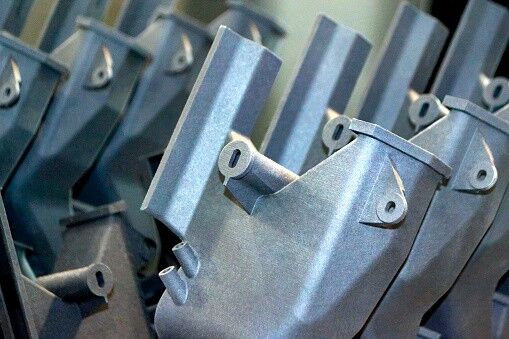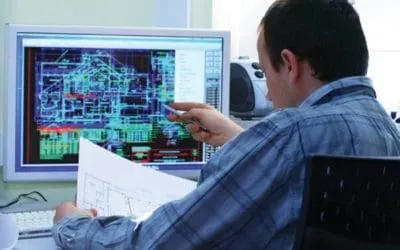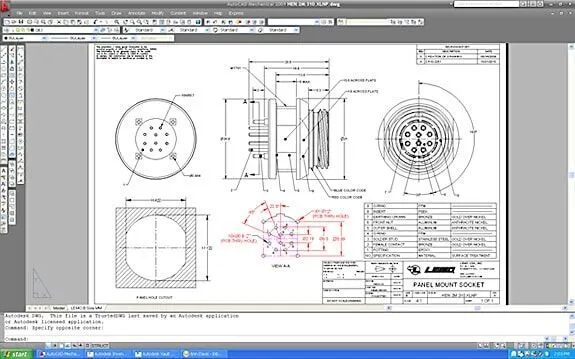How MJF 3D Printing Can Optimize Your Engineering Business

In the rapidly evolving world of manufacturing, new technologies such as Multi Jet Fusion (MJF) 3D printing are transforming the way engineering businesses operate. MJF 3D printing has a lot of promise — offering speed, precision, and flexibility.
In this comprehensive guide, we’ll pull back the curtain on MJF 3D printing. We’ll describe it, explore its benefits, and provide practical examples of how this innovative technology can enhance your engineering business.
What Is MJF 3D Printing?
MJF 3D printing is a powder bed fusion technology developed by HP. It employs a unique approach, using an inkjet array to selectively apply fusing and detailing agents across a bed of nylon powder.
Then, the powder bed is exposed to heating elements that cause the areas with the fusing agent to melt and bond, forming the part layer by layer.
The process begins with a thin layer of material spread over the build platform. The inkjet array then sprays fusing and detailing agents in the shape of the cross-section of the part onto the material layer.
The fusion area melts while the detailing agent controls the edges, ensuring precise detailing. This step is followed by the application of heat, which causes the powdered material to fuse.
The process is repeated layer by layer until the part is fully formed.
In simpler terms, an MJF printer will fuse your part out of nylon powder then cook the part to get rid of any excess. The printer will make one layer of your part at a time, before adding a new layer of nylon powder and building the next layer.
It will repeat this process until your full part is created.
Who Should Use MJF 3D Printing?
MJF 3D printing is a great fit for a variety of sectors, including engineering, automotive, medical, and consumer goods. It’s particularly beneficial for businesses that require rapid prototyping, small batch production, complex geometries, or customizable parts.
Truthfully, almost any company can benefit from MJF 3D printing. If your engineering company ever creates prototypes, needs to generate a new product, or works with customer-facing products, then MJF 3D printing can make your life easier.
5 Ways That MJF 3D Printing Can Optimize Your Business
To better describe how versatile MJF 3D printing is, let’s discuss 5 different ways that you can benefit from this technology.
Expedite the Prototyping Phase
MJF’s high-speed production capabilities make it perfect for rapid prototyping. It allows for swift iteration and validation of designs, reducing development times. You can go from a 3D model to a printed part in a matter of hours.
Make Cost-Effective Small Batch Production
Unlike traditional manufacturing, MJF doesn’t require tooling. This reduces the costs associated with small batch production (typically under 20 parts). This makes it ideal for producing one-offs, short runs, spare parts, or parts for destructive testing.
Design Using Complex Geometries
MJF 3D printing shines in producing parts with complex geometries, something that can be difficult or impossible with conventional manufacturing methods.
It also gives you more freedom as a designer — you can make highly detailed parts that meet the needs of your operation.
Create Truly Customized Parts
Each part printed with MJF can be different without affecting the production cost, allowing for high levels of customization. You can make one-off parts for each of your specific machines and retrofit top-secret parts without sharing your IP anywhere else.
Generate High-Quality Parts
MJF 3D printing yields parts of high surface quality and mechanical strength, making it suitable for functional parts and final products. In a lot of cases, an MJF-printed part is equally strong as a part made out of raw Nylon-6.
Five Examples of MJF Replacing Traditional Manufacturing
Since we’ve created a lot of MJF-compatible 3D models for customers in the past, let’s discuss a few ways that you might use MJF to replace traditional manufacturing in your company.
Custom Automotive Parts
Companies like Volkswagen are leveraging MJF to produce customizable car parts, something that would have been cost-prohibitive with traditional methods. The final result is just as strong, but it’s made faster and at a lower cost.
Medical Implants
The medical sector has seen MJF replace traditional manufacturing for patient-specific implants, medical devices, and ancillary parts of assemblies. This allows for personalized healthcare solutions.
Aerospace Components
MJF is being used to produce lightweight, yet strong components for the aerospace industry, replacing more traditional, labor-intensive manufacturing methods. MJF is one of many 3D printing technologies that companies like SpaceX are actively using.
Consumer Goods
From custom eyewear to personalized footwear (yes, really), MJF has disrupted the manufacturing process in the consumer goods sector. Companies can get to market quicker, and production can be truly customized.
Industrial Tooling
Companies are using MJF to print complex tools and jigs, reducing lead times and improving efficiency compared to traditional tooling methods.
Conclusion
MJF 3D printing is a transformative technology, pushing the boundaries of what’s possible in manufacturing. Its ability to produce high-quality parts quickly, affordably, and with complex geometries opens up a ton of different opportunities for engineering businesses, just like yours.
If you want to start using this futuristic technology today, reach out to our team at CAD/CAM Services. We can create 3D models for you and connect you with different MJF printing shops in the area. Get a free quote today.
Recent Posts


CAD Outsourcing Doesn’t Have to Be Done In India
CAD Outsourcing Doesn’t Have to Be Done in India Do a Google search for “CAD Outsourcing” and what you’ll find is lots of firms located in India, which is fine if you’re prepared to go off-shore for CAD services. But what if your U.S. based company prefers to stay a...

AutoCAD Fiber Optic Designs & Drawings
Before proceeding forward in explaining the affinity between AutoCAD and Fiber Optic, it would be prudent to rationalize the utility of optical cables. When communicating between systems, either via the internet or via an internal network system, a medium needs to be...

CAD Outsourcing: How to Get the Most Out of Engineering
In today’s competitive market, companies need as much help as possible. If you want to take a larger market share, you can start by outsourcing some of your work. This is a quick way to expand your engineering power without onboarding and training a new staff. This...
